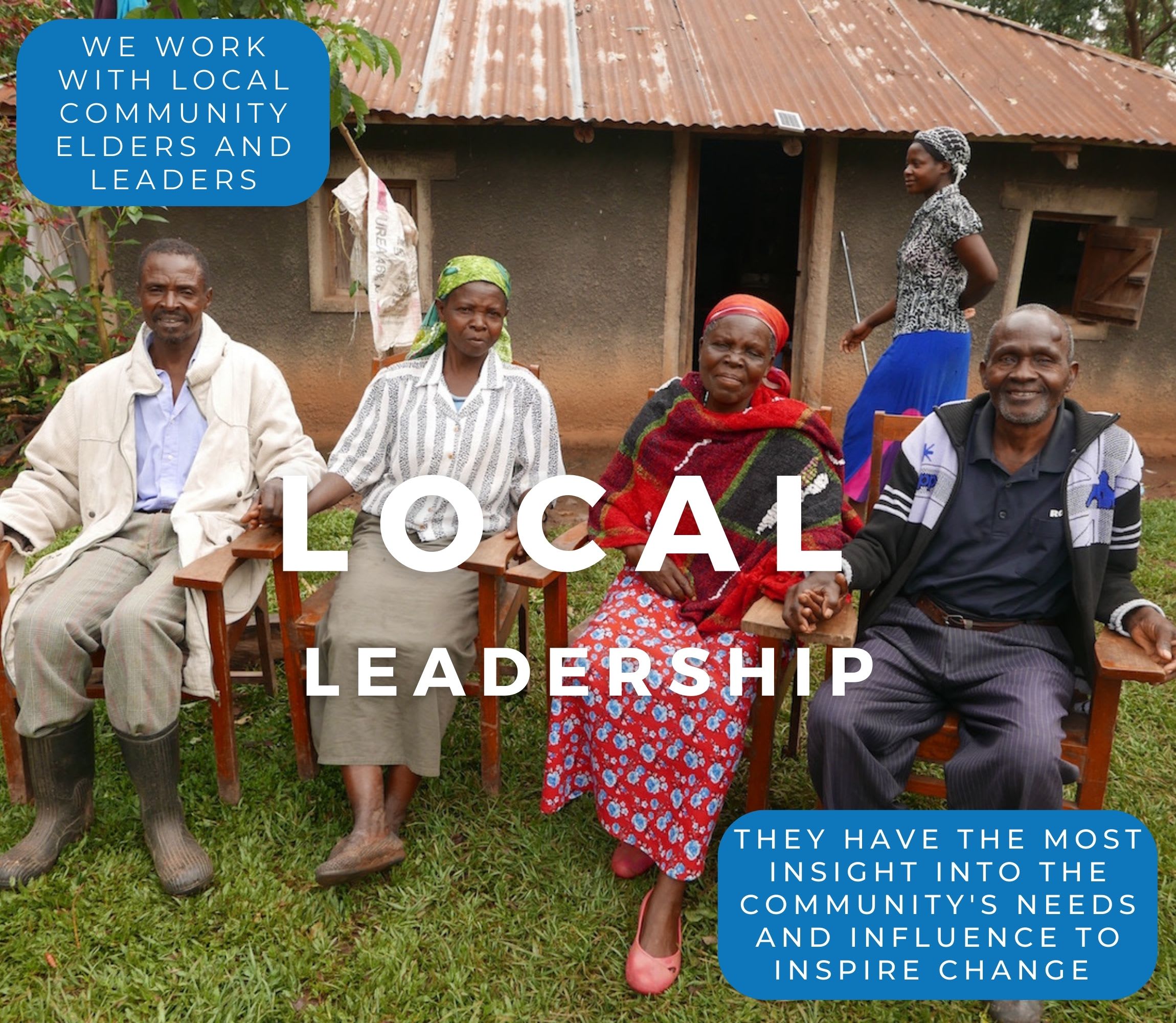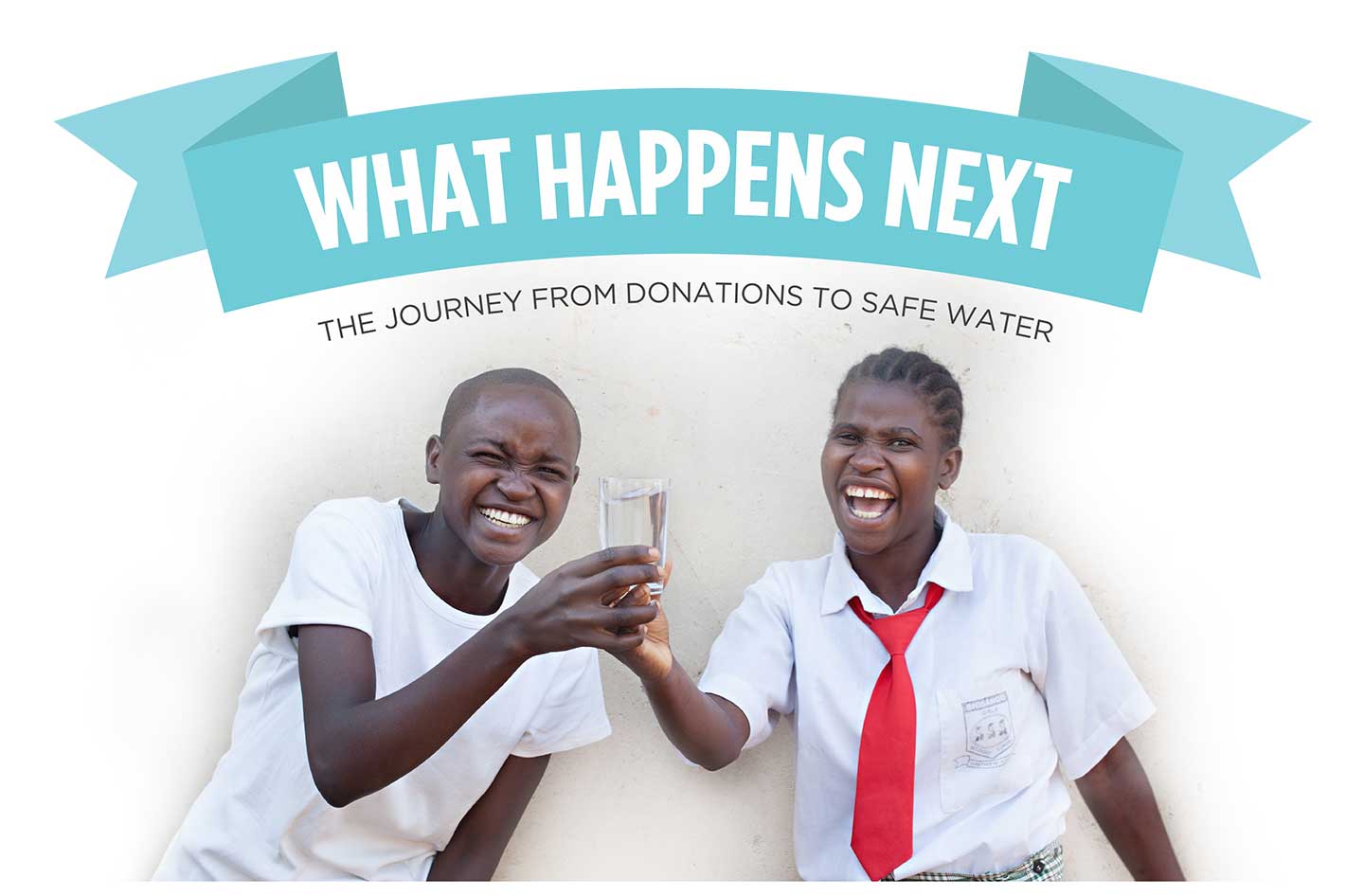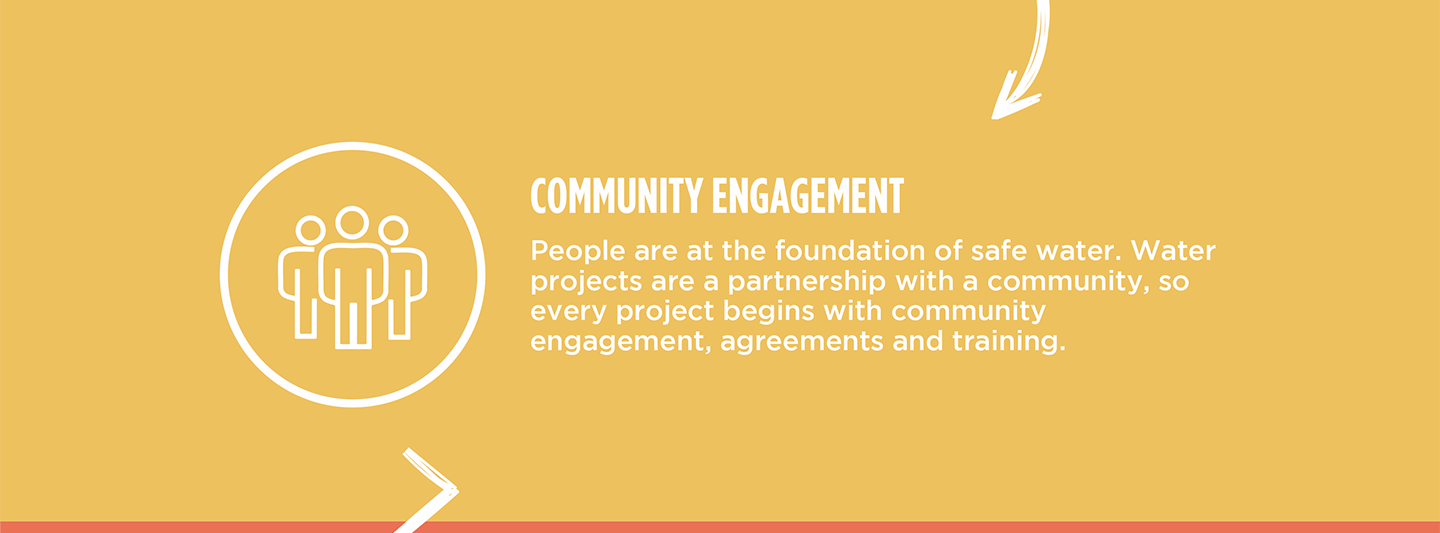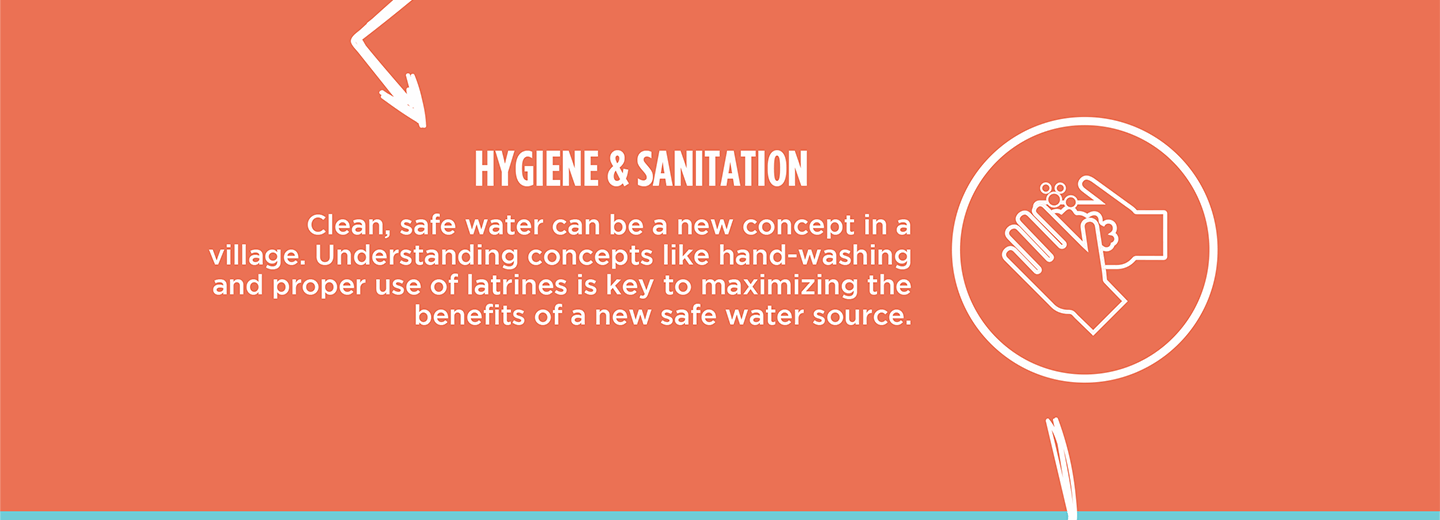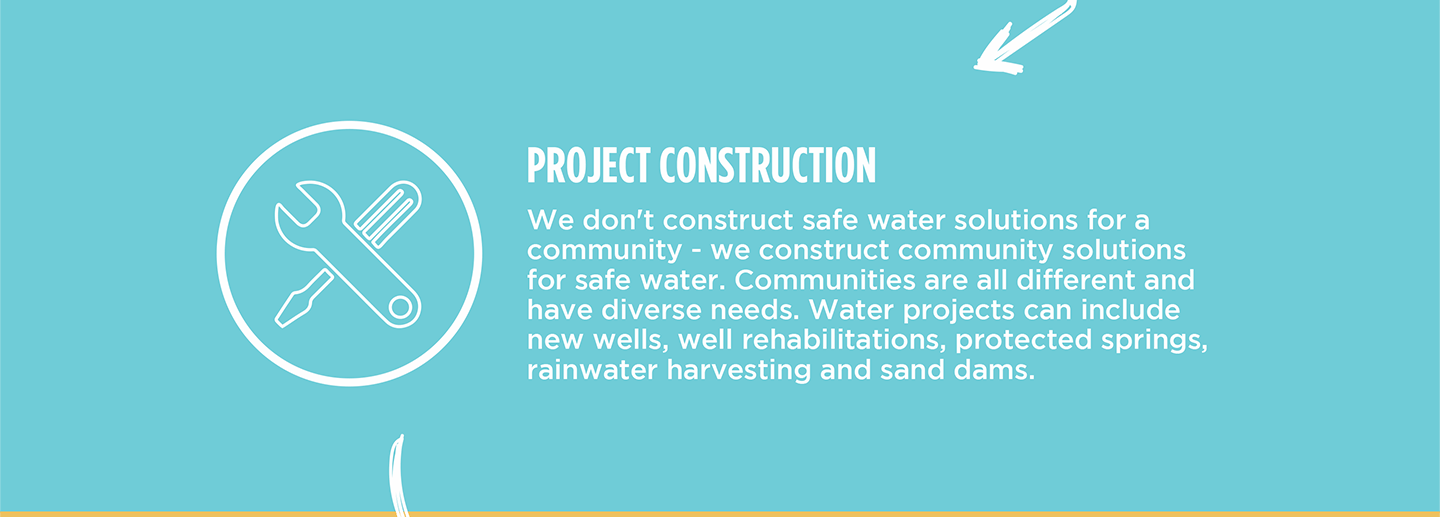The 350 people of Khabalwe Community struggle to access sufficient water. They have a community spring, but although it looks like it functions appropriately, several issues with its current state put community members at risk.
"This spring was done by [the] local community members who gathered materials [for] this spring, but it was not done according to construction standards because [the] materials were not enough. This water source is broken, some [of the spring] eyes were not captured, and when it rains, runoff contaminates [the] water," reported field officer Elvine Atsieno.
Although community members made their best effort, the improper construction leaves the water vulnerable to contamination since it is not filtered correctly.

Elvine continued describing the spring's poor condition: "Water [is] escaping through the wing wall [and] flows through the staircase, making it slippery. This water point is dangerous to users. People have fallen down while putting containers on their heads. Both [the] young and [the] adults have been injured several times while fetching water."

"As you can see, this spring is not in good condition. It takes much time to access water [here]. I take much time reaching this place so that I can fetch water, [and] sometimes I go to school very late. Today, I reported [to] school 15 minutes late, and examinations were ongoing. It's my prayer that this water point is repaired so that I can take [only] a few minutes [to] collect water from this place," said 11-year-old Douglas W., seen above.
However, the challenges of safely and efficiently collecting water are not the only issues confronting community members who use the spring.
"People in this community are facing health problems. There are a number of [cases of] cholera reported in this community. Both adults and children have been seeking medical attention in different health facilities," shared Elvine.

"I [went] to Kakamega General Hospital several [times] to seek medical attention due to [a] cholera attack a few weeks ago. I was down, and doctors diagnosed that it was cholera. I don't have a medical cover (insurance), and anytime I fall sick, I use a lot of money in the hospital," said 75-year-old Salma Washiali, seen above collecting water even though she knows it may make her sick.
The proper protection of the spring will enable people to safely collect all the water they need so they can focus on other essential things in their daily lives. Hopefully, Douglas will have the time and energy required to attend school and improve his grades. And Salma can collect the water she needs and trust it will not make her ill with water-related illnesses that steal her resources and health.
"If this spring can be redone, then all the people will have a reason to smile while enjoying clean water. They no longer [will] visit [the] hospital due to waterborne diseases, and also, no injuries will be reported. An intervention in this community will help much. The money they are using for medication will be channeled to other useful things like paying school fees [and] buying fertilizer and seeds," concluded Elvine.
The Proposed Solution, Determined Together...
At The Water Project, everyone has a part in conversations and solutions. We operate in transparency, believing it benefits everyone. We expect reliability from one another as well as our water solutions. Everyone involved makes this possible through hard work and dedication.
In a joint discovery process, community members determine their most advantageous water solution alongside our technical experts. Read more specifics about this solution on the What We're Building tab of this project page. Then, community members lend their support by collecting needed construction materials (sometimes for months ahead of time!), providing labor alongside our artisans, sheltering and feeding the builders, and supplying additional resources.
Water Access for Everyone
This water project is one piece in a large puzzle. In Kenya, Sierra Leone, and Uganda, we're working toward complete coverage of reliable, maintained water sources that guarantee public access now and in the future within a 30-minute round trip for each community, household, school, and health center. One day, we hope to report that this has been achieved!
Training on Health, Hygiene & More
With the community's input, we've identified topics where training will increase positive health outcomes at personal, household, and community levels. We'll coordinate with them to find the best training date. Some examples of what we train communities on are:
- Improved hygiene, health, and sanitation habits
- Safe water handling, storage & treatment
- Disease prevention and proper handwashing
- Income-generation
- Community leadership, governance, & election of a water committee
- Operation and maintenance of the water point
Chlorine Dispensers
Installing chlorine dispensers is an important piece of our spring protection projects. Protecting a spring provides community members with an improved water source, but it doesn’t prevent contamination once the water is collected and stored. For example, if the water is clean and the container is dirty, the water will become contaminated.
We ensure that each chlorine dispenser is filled with diluted chlorine on a consistent schedule so that people can add pre-measured drops to each container of water they collect. That way, community members can feel even more confident in the quality of their water.
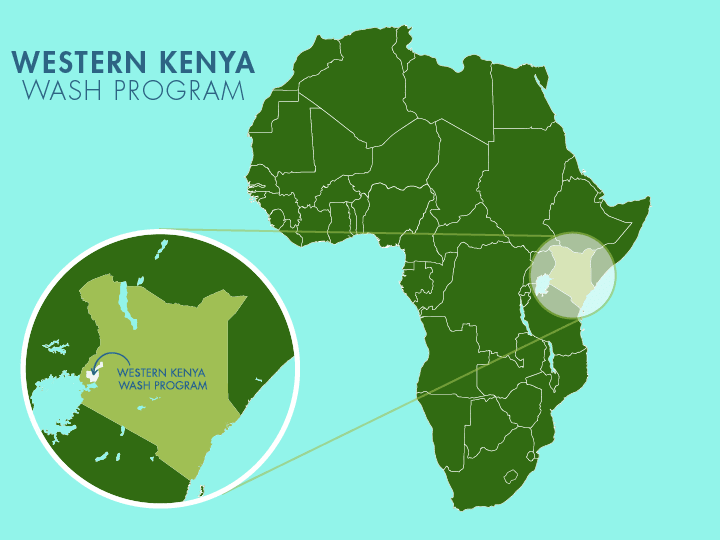
 Protected Spring
Protected Spring
 Rehabilitation Project
Rehabilitation Project

